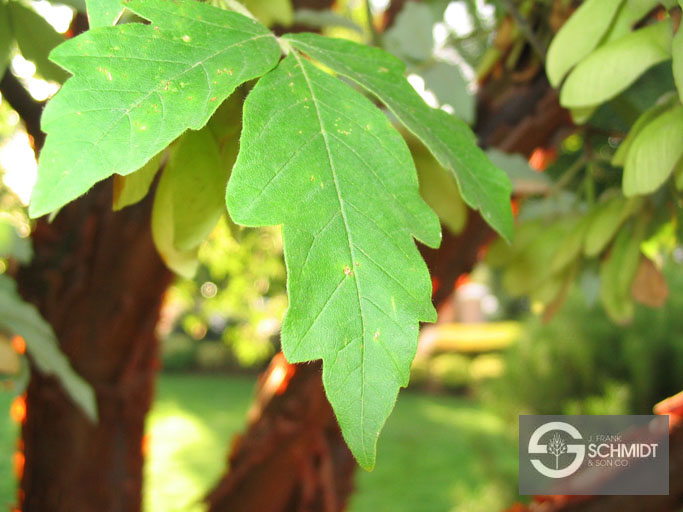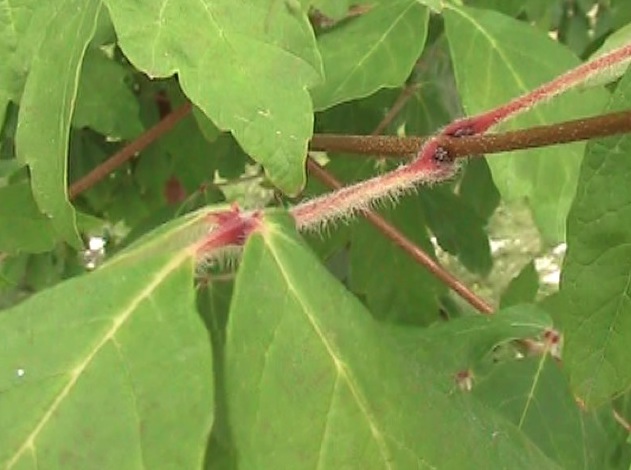| PSC 2620: Woody Trees and Shrub | Course Home | Week 6 |
Acer griseum - Paperbark Maple
Plant Viewer
 |
 |
| Acer griseum is a small to medium-sized ornamental shade tree. | The bark exfoliates prolifically in sheets. It is very eye-catching and a great ornamental feature of the tree. |
 |
 |
| The leaf is trifoliate, with each leaf being elliptic or ovate. | The petiole is 2-3 inches long and very pubescent. |
Plant Description
Acer griseum is a small deciduous tree, reaching 30 feet high with a slightly narrower spread. It is noted for its ornamental bark, which exfoliates in a manner similar to the many Birch species. It prefers moist, well-drained soil and will struggle under heavy drought conditions.
The most striking feature of Paperbark Maple is the exfoliating bark. The bark is a rich cinnamon-brown color that peels away from the stem in sheets. The bark begins to exfoliate on young branches (by third year), so this decorative feature appears throughout the canopy of the tree. Bark that is not exfoliating is smooth and shiny - and retains the deep cinnamon color.
The blue-green leaf is 3-6 inch long and trifoliate, with each leaflet being elliptic or ovate in shape. The margins of the leaflets have large, distinct teeth. The petiole is quite long (2-3 inches) and very pubescent. In fall the leaves turn anywhere from bright red to a mottled red. The samaras are 1 to 1 1/2 inches long, with the wings arranged at a little less than a 90 degree angle. The samaras is slightly pubescent.
Landscape Use
Acer griseum shines as an ornamental specimen tree, where it has the opportunity to stand out and be appreciated for its ornamental characteristics. I have seen them used as street trees and they seem to perform fine, though they probably need a wider parking strip or planter to grow well.